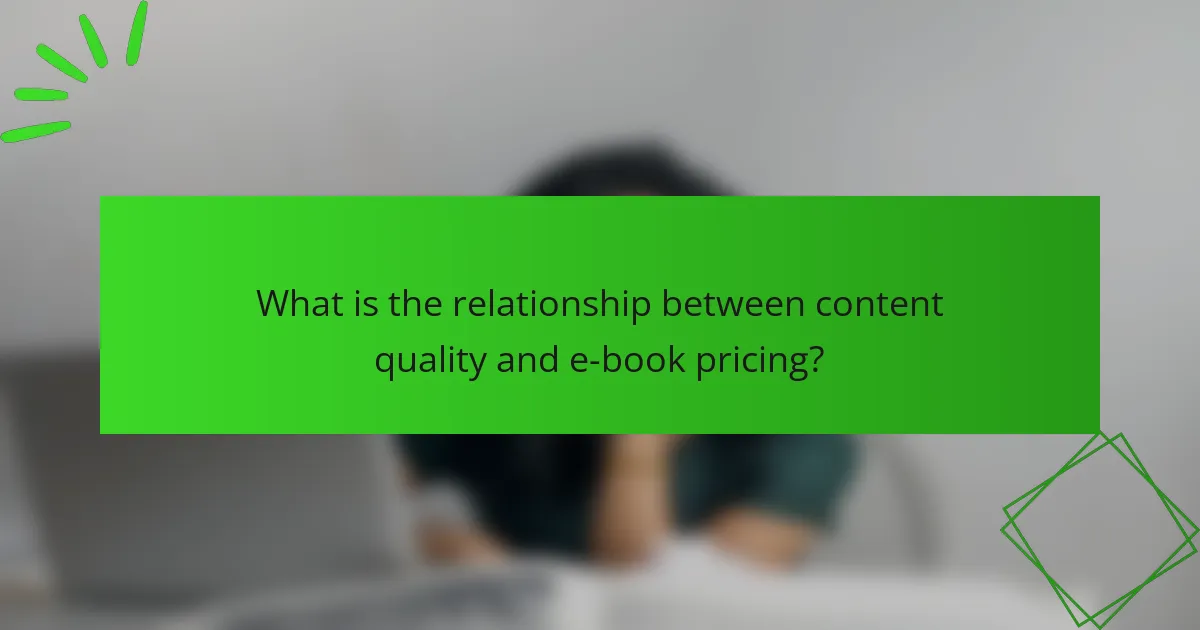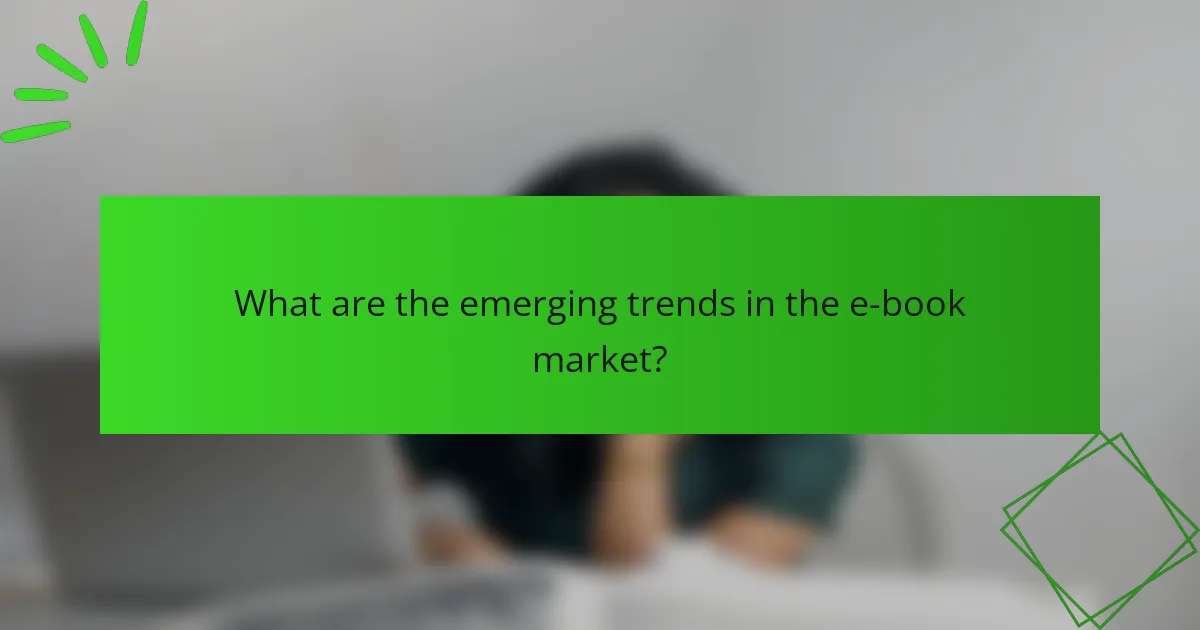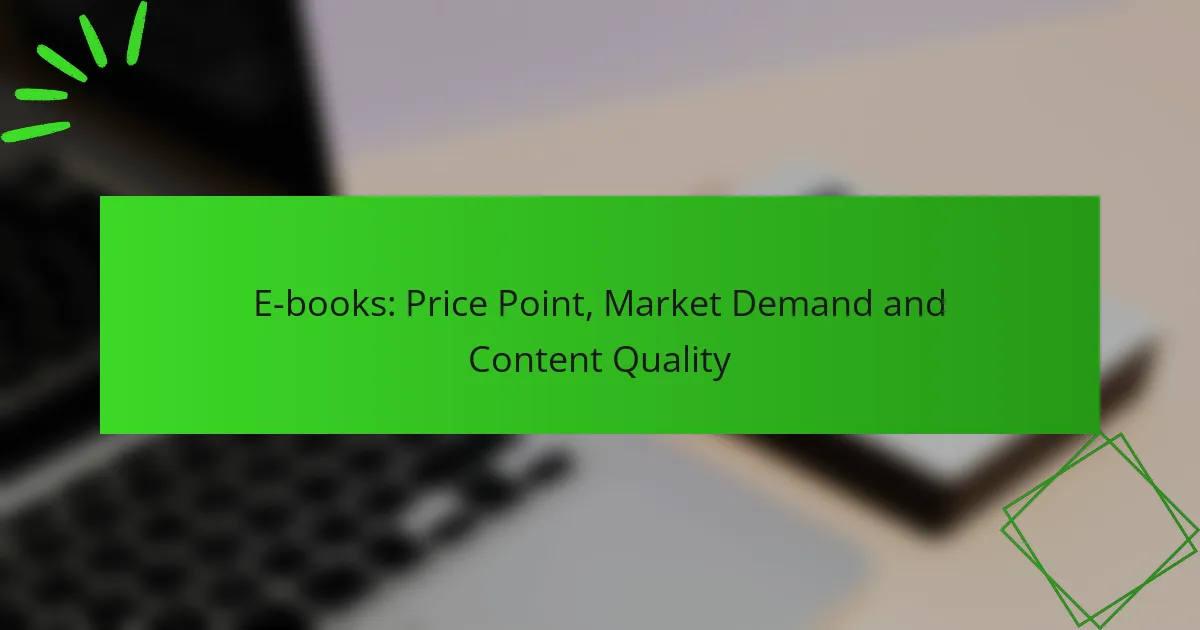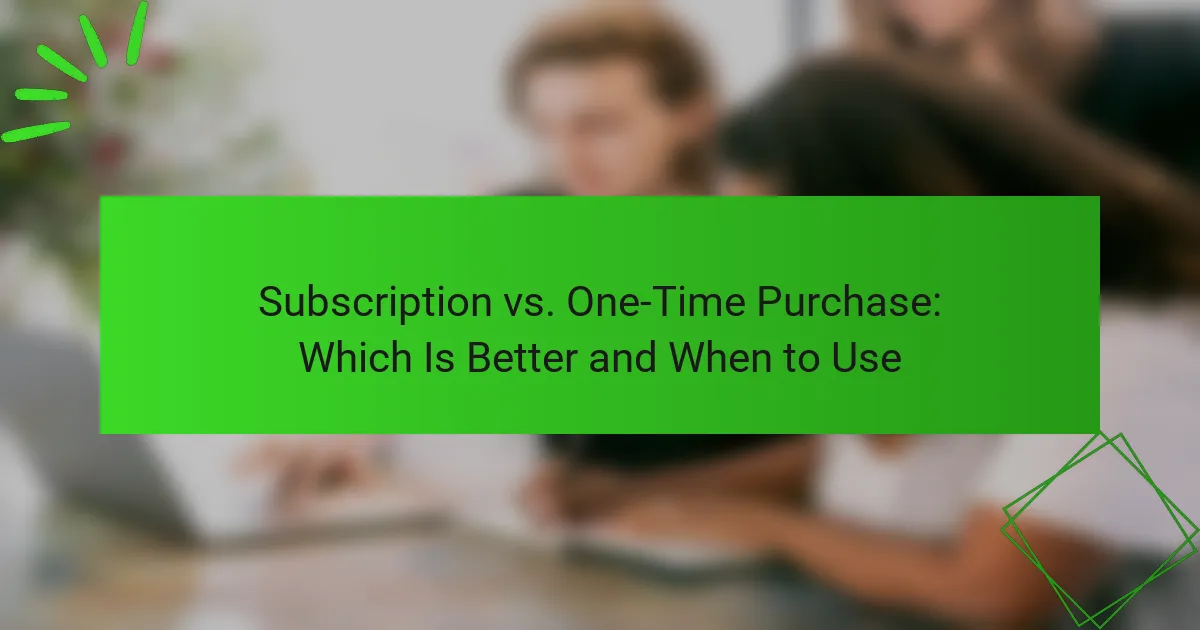The pricing of e-books in Canada varies widely, typically ranging from CAD 5 to CAD 30, influenced by genre and publisher. Market demand plays a crucial role in determining these prices, with higher demand enabling publishers to charge more. Additionally, the quality of content significantly impacts pricing, as consumers are often willing to invest in well-researched and professionally edited works.

What are the current price points for e-books in Canada?
The current price points for e-books in Canada typically range from CAD 5 to CAD 30, depending on the genre and publisher. Fiction e-books often fall on the lower end of this spectrum, while non-fiction titles, especially academic or specialized works, can be more expensive.
Average price range for fiction e-books
Fiction e-books in Canada generally range from CAD 5 to CAD 15. Bestsellers or new releases may be priced higher, often reaching up to CAD 20. Discounts and promotions can frequently lower these prices, making it easier for readers to access popular titles.
Average price range for non-fiction e-books
Non-fiction e-books usually have a broader price range, from CAD 10 to CAD 30. Academic texts or specialized guides can be at the higher end, while general interest non-fiction may be more affordable. Pricing can vary significantly based on the author’s reputation and the book’s depth of content.
Factors influencing e-book pricing
Comparison with print book prices
E-book prices in Canada are generally lower than print book prices, which often range from CAD 15 to CAD 40. The cost savings come from the absence of printing and shipping expenses. However, print editions may offer additional value through physical ownership and collectible aspects, which can justify their higher price points.

How does market demand affect e-book pricing?
Market demand significantly influences e-book pricing, as higher demand typically allows publishers to set higher prices. Conversely, when demand wanes, prices may decrease to attract buyers, reflecting the balance between supply and consumer interest.
Trends in e-book sales growth
E-book sales have shown a steady increase over the past decade, driven by the rise of digital reading devices and platforms. Reports indicate that e-book sales can grow by single-digit to low double-digit percentages annually, especially during periods of heightened interest in specific genres or authors.
As more readers turn to e-books for convenience and accessibility, publishers are adjusting their pricing strategies to align with these growth trends. For instance, popular titles may see price increases due to heightened demand, while lesser-known works might be priced lower to encourage sales.
Impact of consumer preferences on pricing
Consumer preferences play a crucial role in shaping e-book prices. Readers often gravitate towards genres that are currently trending, which can lead to price adjustments based on popularity. For example, romance and thriller genres may command higher prices during peak interest periods.
Additionally, factors such as author reputation and book reviews can influence perceived value, prompting publishers to price accordingly. E-books from well-known authors may be priced higher than debut novels, reflecting consumer willingness to pay more for established names.
Seasonal demand fluctuations
Seasonal demand fluctuations can significantly impact e-book pricing strategies. For instance, during holiday seasons or major sales events, publishers may lower prices to attract more buyers, leading to increased sales volumes. Discounts during events like Black Friday or back-to-school seasons are common.
Conversely, certain times of the year, such as summer or winter reading seasons, may see a rise in demand for specific genres, allowing publishers to maintain or even increase prices. Understanding these seasonal trends can help both consumers and publishers make informed decisions regarding e-book purchases and pricing strategies.

What is the relationship between content quality and e-book pricing?
The relationship between content quality and e-book pricing is significant, as higher quality often justifies a higher price. Consumers are generally willing to pay more for e-books that offer well-researched, engaging, and professionally edited content.
Quality indicators for e-books
Quality indicators for e-books include factors such as thorough editing, professional formatting, and the author’s expertise. Reviews and ratings on platforms like Amazon or Goodreads can also serve as indicators of an e-book’s quality. Additionally, the inclusion of supplementary materials, such as illustrations or interactive elements, can enhance perceived value.
How content quality affects consumer willingness to pay
Content quality directly influences consumer willingness to pay, with many readers associating higher prices with better content. E-books that are well-written and provide valuable insights can command prices that are significantly higher than average. Conversely, poorly written or edited e-books may struggle to attract buyers, even at lower price points.
Examples of high-quality e-books and their prices
High-quality e-books often range from around $10 to $30, depending on the genre and depth of content. For instance, a well-researched non-fiction e-book may be priced at $15, while a popular fiction title with strong reviews could be around $12. Notable examples include “Educated” by Tara Westover, priced at approximately $13, and “The Night Circus” by Erin Morgenstern, available for about $11.

What are the key factors influencing e-book market demand?
The demand for e-books is primarily influenced by consumer behavior, digital reading habits, and effective marketing strategies. Understanding these factors can help publishers and authors tailor their offerings to meet market needs.
Consumer behavior trends in Canada
In Canada, e-book consumption is on the rise, driven by an increasing number of digital device users. Many Canadians prefer the convenience of e-books for their portability and accessibility, particularly among younger demographics.
Price sensitivity also plays a role; consumers often seek affordable options, making competitive pricing crucial for e-book sales. Promotions and discounts can significantly boost interest and purchases.
Impact of digital reading habits
Digital reading habits have shifted towards shorter, more frequent reading sessions, often facilitated by mobile devices. This trend encourages the consumption of e-books, as readers can easily access content during commutes or breaks.
Additionally, the rise of audiobooks and interactive e-books reflects a growing preference for diverse formats, which can enhance engagement and attract different reader segments.
Role of marketing in e-book demand
Effective marketing strategies are essential for driving e-book demand. Utilizing social media, email campaigns, and targeted ads can reach potential readers and create buzz around new releases.
Building an author brand and engaging with readers through platforms like Goodreads can foster loyalty and encourage word-of-mouth recommendations, further enhancing e-book visibility and sales.

How do e-book platforms affect pricing and demand?
E-book platforms significantly influence pricing and demand through their market reach, pricing models, and promotional strategies. The competition among platforms like Amazon Kindle and Apple Books creates varied pricing structures that can impact consumer choices and overall market demand.
Comparison of major e-book platforms
The two leading e-book platforms, Amazon Kindle and Apple Books, dominate the market with distinct features and pricing strategies. Kindle offers a vast selection of titles, often at lower prices due to its subscription model, while Apple Books emphasizes quality and exclusivity, which can lead to higher prices.
Other platforms like Google Play Books and Kobo also play a role, providing alternatives that cater to different user preferences. Each platform’s user interface, device compatibility, and promotional offers can further influence consumer demand and pricing dynamics.
Pricing strategies of Amazon Kindle vs. Apple Books
Amazon Kindle employs a competitive pricing strategy, often featuring discounts and promotional deals that attract budget-conscious readers. Their subscription service, Kindle Unlimited, allows users to access a wide range of titles for a monthly fee, which can lower the effective price per book.
In contrast, Apple Books typically prices its e-books higher, focusing on premium content and exclusive releases. This strategy appeals to users who value quality and are willing to pay more for a curated selection. Understanding these pricing strategies can help consumers make informed choices based on their reading habits and budget.

What are the emerging trends in the e-book market?
The e-book market is experiencing significant shifts driven by subscription models, self-publishing, and technological advancements. These trends are reshaping how readers access content and how authors distribute their work.
Growth of subscription models
Subscription models are becoming increasingly popular in the e-book market, allowing readers to access a wide range of titles for a monthly fee. Services like Kindle Unlimited and Scribd offer users the ability to read multiple books without purchasing each one individually, which can be cost-effective for avid readers.
These models benefit publishers and authors by providing a steady revenue stream and increasing exposure for lesser-known titles. However, authors may receive lower royalties per read compared to traditional sales, which can impact their earnings.
Impact of self-publishing on market dynamics
Self-publishing has transformed the e-book landscape, enabling authors to bypass traditional publishing routes and retain more control over their work. Platforms like Amazon Kindle Direct Publishing allow writers to publish their e-books directly, often leading to higher profit margins.
This trend has resulted in a diverse range of content available to readers but has also led to challenges in quality control. Readers may encounter varying levels of editing and formatting, making it essential for them to research titles before purchasing.
Technological advancements in e-book formats
Technological innovations are enhancing the e-book experience, with formats like EPUB and MOBI evolving to support interactive features and multimedia content. These advancements allow for richer storytelling and more engaging reading experiences.
Additionally, improvements in e-reader devices, such as better screen technology and battery life, are making e-books more accessible. Readers can now enjoy a more comfortable reading experience, whether at home or on the go, which is likely to increase overall market demand.










